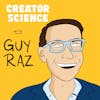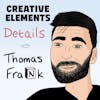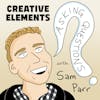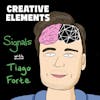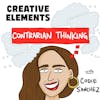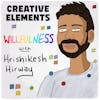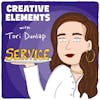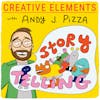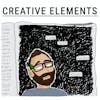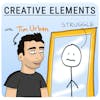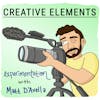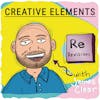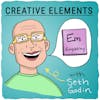
#74: Bad Bunnies NFT – From idea to sold-out NFT project in less than 3 months
Play EpisodeBad Bunnies are 5,500 randomly generated, gamified NFTs, released from captivity to the Ethereum blockchain.
c4nopener is one of the creators of the Bad Bunnies NFT project. Bad Bunnies are 5,500 randomly generated, gamified NFTs, released from captivity to the Ethereum blockchain.
The project was created by c4nopener, a product designer bunny with 15 years experience in the industry, his brother poopli, and their friend bdub.
The project opened to the public for minting on Sept. 18 at a price of 0.0275 ETH and sold out in a matter of 48 hours.
In this episode, we talk about the origins of Bad Bunnies, their sold-out launch, a step-by-step guide for how you can launch your own NFT, the role of hype in an NFT project, and why the Bad Bunnies team valued Design over all else.
Visit the Bad Bunnies collection on OpenSea
Follow Bad Bunnies NFT on Twitter
Full transcript and show notes
***
ABOUT JAY CLOUSE
Subscribe to my weekly newsletter
***
LISTENER SUPPORT
Support this show through Buy Me A Coffee
Enroll in my podcasting workshop
Enroll in my course on podcasting, Podcast Like The Pros
***
SPONSORS
Try Podia and save 15% for life as a Creative Elements listener
Start your free trial of SavvyCal and get your first month free using promo code ELEMENTS
Get a free month of Blinkist Premium
***
PODGLOMERATE NETWORK
This show is a part of the Podglomerate network, a company that produces, distributes, and monetizes podcasts. We encourage you to visit the website and sign up for our newsletter for more information about our shows, launches, and events. For more information on how The Podglomerate treats data, please see our Privacy Policy.
Since you're listening to Creative Elements, we'd like to suggest you also try other Podglomerate shows surrounding entrepreneurship, business, and careers like Rocketship.fm and Freelance to Founder.
Learn more about your ad choices. Visit megaphone.fm/adchoices
c4nopener 00:00
But I think we sold out by the next morning. Like it just there's a huge buzz and all different Discord channels of other projects where like I you got to jump in, they just dropped the price and then all the stuff on Twitter and I just got goosebumps then, because it's seeing that change and then seeing the kind of community that's coming out of it is is amazing.
Jay Clouse 00:23
Welcome to Creative Elements, a show where we talk to your favorite creators and learn what it takes to make a living from your art and creativity. I'm your host Jay Clouse. Let's start the show. Hello, my friend. Welcome back to another episode of Creative Elements. I did something this week that I've only done twice now in the history of this show. And as fast tracking an episode to go from interview to publishing in less than a week. The interview you're about to hear it was recorded the evening of Wednesday, September 22nd. And I moved this episode along quickly because we're going into some more new territories today, venturing into the world of NFT artwork, and that's a world that moves really fast. We first heard about NFTs on this show back in Episode 50 with Nick DenBoer aka Smearballs, which published on March 30th, 2021.
Nick DenBoer 01:28
Now, I've just completely stopped. I cancelled three jobs last week because I just want to focus on this this crypto art NFT stuff full time because there's some potential there to make more money than doing commercial work.
Jay Clouse 01:40
When Nick said that, my ears perked up a little. It wasn't my first time hearing about NFTs but I did sense a bit of momentum in the space then in March. Now I know all this may be new to a lot of people so I'm going to try and explain a lot of the lingo as we go. So let's start from the top, NFT is an acronym that means non-fungible token. Non-fungible tokens or NFTs are assets on a blockchain with unique identification codes and metadata that distinguish them from one another. The key word here is unique, that's what makes them non-fungible. Cryptocurrencies like Bitcoin or Ethereum are fungible because they are all the same. One Bitcoin is exactly the same as another Bitcoin. That's what makes them a good medium for transactions. The same goes with any currency like the US dollar. The nature of a non-fungible token or NFT is that because it is unique, it is inherently scarce, and scarcity creates value. The Mona Lisa is a unique piece of art and so it's super valuable. Artists and creators have been making unique pieces of artwork, which are tied to the blockchain, a decentralized record of the existence and ownership of each piece. And typically, it's the Ethereum blockchain. Ethereum is sometimes called ETH, that's ETH for short, and this year has fluctuated in value between $2,000 and $4,000 USD. As of this recording, one ETH is worth just over 3,000 US dollars. So I was interested in NFTs when I talked with Nick but I didn't really jump in at that point. And then some crazy things started happening, I started seeing people all over Twitter, change their avatars to pieces of digital art. Most frequently, I saw monkeys wearing clothes and pixelated human heads. Those projects were the Bored Ape Yacht Club and CryptoPunks. CryptoPunks were one of the first NFT projects ever made in mid 2017, 10,000 pieces with unique attributes, some attributes more rare than others. And as you can guess, pieces with rare attributes are in higher demand and more valuable than others. For example, there are a couple of CryptoPunks that are zombies and a couple that are aliens. Almost all of them are humans but the zombies and the aliens because there are fewer of them, they are worth more to the market. At one point, the creators of CryptoPunks gave them away for free. But this year, the average sale price was more than 42 Ethereum, that's over $128,000 USD. There have been sales worth more than 7 million for some of the more rare pieces like the aliens. And then there's the Bored Apes of the Bored Ape Yacht Club, they were originally sold for .08 ETH. Today, the floor price also known as the lowest available price for you to buy a Bored Ape is around 39 ETH. I even saw a friend of mine purchase a clip art rock there are only 100 of these called Ether Rocks. He bought it for 1.7 ETH and sold it for over 400 ETH just 19 days later, that's more than $1.3 million dollars. So as you can guess I've been paying more attention to the NFT space lately, collecting 19 or so pieces myself. Now I've thrown out a lot of big numbers here in terms of dollars and a lot of people are in the space as a means of investing, but this episode is not investment advice. You should do your own research and make your own financial decisions based on your own circumstances. One of the projects I was interested in and actually purchased recently is called Bad Bunnies, which launched the public on September 18th. It's a set of illustrated green bunnies divided into three bunny gangs. There's this interesting juxtaposition of cute bunny, but also a gang member. And today on the show is one of the creators known as C4nopener.
c4nopener 05:30
My brother and I always kind of work on, you know, art projects and, and different things. And at the time, we're actually working on a comic and all worked out, script all done, character design, all done, ready to go on Kickstarter. And I also look, this NFT stuff is way more interesting than this process that we do know. This is something new, let's do it. So I called my brother and I said, what do you think about your shifting gears and doing this? I said, let's do it.
Jay Clouse 06:02
The bad bunnies project had 5,500 pieces and sold out in less than 48 hours. I have six of them myself. And the project was all over the Discord and Twitter circles that I'm a part of, people love the artwork,. And at a sale price of .0275 ETH, that's 151 ETH total to the creators, which is around $450,000 USD. Here's the great thing about NFTs for the creators though, because every sale is tracked and publicly logged on the blockchain, you can build into the project royalties to the creator on every subsequent sale. So not only did Bad Bunnies earn money from their successful launch, but they earn a 2.5% royalty on every sale between owners. That's all managed and executed programmatically through the blockchain. Some NFTs factor in as high as a 10% royalty. Those secondary market sales between owners typically are done on a platform called OpenSea. And with more than 600 ETH worth of secondary sales on OpenSea for Bad Bunnies so far, that's another 15 ETH to the Bad Bunnies team. That team includes C4nopener, his brother Poopli and their friend Bdub. C4nopener got into space a little bit before I did. And he was inspired by one of the most popular NFT projects today, Cool Cats, a collection of 9,999 randomly generated and stylistically curated blue cats with a current floor price of nearly 10 ETH.
c4nopener 07:27
You know, it'd be absurd to say that Cool Cats was a huge influence. And the way it was a huge influence is that I missed out on minting like I'd been involved, I think they sold out probably when I entered so you could almost kind of go whenever Cool Cats sold out, that's when I got into NFTs. And I was just like, damn, you know, damn it but I was I was still there post post mint. But it was this kind of thinking in my head of, you know, you're like on open, say, you know, like a wall, a wall of NFTs that you want to own. And the thought that there were people that add walls of Cool Cats that they owned, I just kind of went look, if I'm feeling this, a ton of other people are feeling this. So I just kind of thought look, there's a whole bunch of people that missed out on Cool Cats. We can open up this space, can we not? And the we only do stuff that we believe in and want to do. And there was an angle in the Qt Notes of bunnies being subverted by being in gangs and wearing biohazard suits and samurais and and whatever and and we immediately that was a discussion and we just went it's a no brainer, truth see aligned with that done. And so yeah, and then it just became this very tight schedule that I pushed us all to. And coming up to the launch date that we said, we were ready for launch about half an hour before we launched.
Jay Clouse 09:06
The Bad Bunnies timeline to launch is insane and we'll talk all about it in the interview. But one of the most interesting parts of this whole space in my opinion is the way these teams are building community around special access, collaborations, and even game mechanics around these projects. Most projects have a community Discord that identifies who owns a certain piece and gives them unique access to areas within the community. And they're creating roadmaps in real time for what they hope to accomplish with the project in the future, from physical locations, to plans for the metaverse and the Bad Bunnies team has a plan for a collaborative game too, including physical trading cards, which C4nopener says is an integral part of their success.
c4nopener 09:45
So the game is coming but we we need to break it down. So this is where it's going, it's all there. We've just been, you know, I've never been run off my feet so much in in my entire life so there'll be a lot of people waiting for us to deliver this. And there's some really cool scenarios in there that are only possible in the NFT space. We want to start with physical cards because it's just so cool and why not? And then being able to link that even a physical card game, being able to link that to owning that actual NFT, and getting a boost for that card for owning it. And, you know, certainly QR codes come into that and all this stuff, it's it's a huge part. And it's a huge part of why everyone has kind of come along to us as well.
Jay Clouse 10:36
So in this episode, we talk about the origins of Bad Bunnies, they're sold out launch, a step by step guide for how you can launch your own NFT, the role of hype in an NFT project, and why the bad bunnies team value design over all else. I'd love to hear your thoughts on this episode. As you listen, it's definitely new territory for us. You can find me on Twitter or Instagram @jaycouse. Just tag me, say hello, let me know that you're listening. And now let's talk with C4nopener.
c4nopener 11:10
We're an artistic family. My dad was an artist, my younger brother who is a Poopli the artists on his project and one you know, you can grow up with an eye, an eye for art, and you know what you're looking for. And often that's that trigger for emotion. So my dad was an artist and when I was like, you know, six or seven, I would walk past the studio and the door would be open and you'd see him sitting there with a canvas. And the canvas, it had nothing, nothing on it. And okay, then the next day you walk past, and it's the level of interest of a seven year old, but you'd say a bit more paint there. But most of the time, I didn't see him painting, I saw him sitting in a chair, staring at the canvas, cetera, et cetera, you walk past you walk past, it develops and so on. And then the first time that I helped him unload at a gallery, where he's having a show, the cardboard cover came off the big piece of artwork and I helped put it on the on the wall. Oh, and, that's that one that he was doing. And when I stood there, I could kind of sense the time and the effort that he put into it and realize this is weird, right? This is this is probably at like 10. Realizing that what I was looking at, was him finding the emotion during that time. And that was a realization of good art, that's what art is, it's the thing that the artist is trying and finding to say. They don't know it, but it's there. It's the time, the skill, and the effort that gets it from inside their soul and spirit and consciousness as the time, the skill, and the effort that takes it out of there and puts it there for the rest of us to say it. So I took all of that into product design where I was just kind of like, you think you can put all of these bits and pieces in front of people and they will take it all in. But I know the limit of human perception and understanding and consciousness, we dismiss 90% of what we see. So you have to drive and drive and drive until you find this emotional element that someone takes half a second to look at and they know exactly where you're coming from. That takes a lot of work but it's the way you have to do it. And so when I came to Bad Bunnies, it was like you got half a second for someone to understand the value of what they just bought. And if they can't discern that, it's an issue. So every single one and I believe that every single one that's there after second you know where that stands and that's that's how we took that idea of our emotion into this project. And even though it can seem like a funny little project for people's like bunnies with helmets on toaster, steaks coming out of the toaster, whatever. All that is is a bunch of artists and developers having fun but it's still the same basic concept of truth and emotion.
Jay Clouse 14:16
Before we get deeper into the Bad Bunnies NFT project, I wanted to hear how C4nopener and the bad bunnies team got into NFT's in the first place.
c4nopener 14:24
Much of the outworld puts most people that at arm's length, right? Like it's it's either impenetrable or they don't want you or if you're an outsider, getting where you need to be is incredibly difficult. And with NFTs, I bought into just a quick like fun little project and I was went, oh that was yeah, that was cool and always from the basis of I will put that on my wall. So it's it's okay yeah, the cost is the cost but if whatever whatever, I put that on my wall, I'm happy. So I did that and then I came across another project, shout out to Liverboy, which is a series of 101, one paces. And I saw them and I don't think many had sold and I just loved the look at them and I bought 10. And I went, by now have 10 things that I can put on my wall. And they've all increased from probably 0.038 at the time. And they generally go between .5 of 1/8 now, and I've got 10 of them. And I was like, well, this is fun. Let's keep doing this. And that's pretty much it, you know.
Jay Clouse 15:43
How long ago are we talking? It's like a year, it was like three months ago, was it several years?
c4nopener 15:47
Two and a half months ago, this space is it's lightspeed, it's just unbelievable. So I think it's so to give you an actual date, let's call it June, sometime in June, because I looked at my OpenSea account and it said, opened in June or something. And I was like, okay, well, I guess it was June. So you know, three months or whatever, so.
Jay Clouse 16:11
This is actually great because I'm looking around the NFT space right now. And I've probably been into it for a month and a half, two months.
c4nopener 16:19
Yep.
Jay Clouse 16:19
And I see projects like Bad Bunnies and I'm like, I bet these guys been working on this for a year. There's no way that I could get this spun up and start doing this type of thing right now. And you're saying you got into NFTs yourself, like three or four months ago.
c4nopener 16:31
So yeah, so so basically, I suppose the project started two months ago, which you know, and you're right to say so because it was an insane schedule. I guess I've been into NFTs for a month or let's let's, let's expand it so it doesn't sound ridiculous. So let's just say six weeks or something. And I just said, look, we can do this so I think by the afternoon, we had the first draft. Now we had the first sketch of the bunny and it was it's not that it was terrible, it's just that it was not right. And a few days later, we had probably lock that down to a a good outline and frame. And then all the discussions about what are they and what are they going to wear? And and how do we do all this stuff?
Jay Clouse 17:21
Crazy and did you set that aggressive launch date because you felt like there was a window that you really need to hit for any particular reason? Or you are just like, you know what, sooner we get something out, the sooner we'll learn?
c4nopener 17:33
Definitely a window because of the last prior to that conversation, because of the last saved month or six weeks, being in NFTs, you can see how fast it moves. It's just, it's just insane. And so it was more along the lines of don't do this, if you can't do it at pace, but well. So the thing is, is where perfection is. So you can see that in the art. It's just everything was put through the wringer in terms to just go, no, again, tweak again, shrink it down to 90 pixels or whatever. Twitter avatar is put it into Twitter, like see what it looks like. And then you know, the discussion is see that there you can't tell what that is. Do it again, times the hundreds of assets that we designed and and made. So it was this thing of I know that the the two of us which became became three of us, obviously, which we'll get to, but I know the two of us can maintain the integrity of the design, we're just gonna have to work a lot.
Jay Clouse 18:47
After a quick break, C4nopener and I get into the specifics for launching an NFT project. And a little later we talk about the roles that community design and hype play in a successful launch. So stick around and we'll be right back. Welcome back to my conversation with C4nopener of the Bad Bunnies NFT project. Before the break, C4nopener kind of blew my mind by sharing just how quickly he and the Bad Bunnies team took this project from idea to launch. And I figured there are a ton of steps involved to a successful launch. So I asked if they looked at other projects and sort of reverse engineer the process or if they've been given some sort of direct guidance from another team.
c4nopener 19:26
Just reverse engineer and then so that's when the Bdub comes into it, who's my oldest friend from childhood. We met at preschool and have been best mates ever since. That yeah, the next discussion was a man, perfectly an ideal in this, want to be involved. And luckily, while we were doing our art thing our whole lives, Bdub was you know studying computer science at uni and so when I said to him, do you want to do this? His his mouth opened and didn't stop for about 10 minutes. Just okay, so what you need to do is a JSON file does this with the metadata and if we do a Python script, it should be able to generate this and that, and okay, well, great then.
Jay Clouse 20:10
It's like you're the man for the job.
c4nopener 20:12
And so two days later, he had, he had the spreadsheet up, he had a general script done, and was clamoring for where are these assets that I can test and at that point, we had probably 10 assets, like a leather jacket, a silent singlet, a greaser, greaser here, and like a couple and a couple of faces. And he said, you know, give me some assets just so I can run some tests. And then the most amazing thing about this project apart from the joy, the joy of seeing Poopli's art just come through each day, what do you think about this? And if if we kind of got our text messages in WhatsApp and all of that, and all you would say is image, awesome exclamation marks, image, awesome like, it is awesome, awesome, that's great, awesome, great. And, but the the really interesting thing about the project was, I actively try and not use Excel because it's just not like, you know, I just don't know how to do it, anything.
Jay Clouse 21:16
It's not fun.
c4nopener 21:16
It's not fun and well, it's fun to Bdub like he's this, whatever. But he put the spreadsheet together with tiers, the tier one to eight that we have in the columns, or the names of all the assets in the left. And then it really was my job with his guidance to populate the position and rarity of the assets across the ITs in the spreadsheet. So used to kind of see lower assets on the left, left column, or the asset names lower lower asset at the top, the higher, you know, toast ahead and all that stuff down the bottom, the columns of the eight tiers going out, left to right, and a cascading bunch of numbers to determine when a certain asset will generate and match with another asset. And in the beginning, I just, I was had no confidence that I was going to be able to assist Bdub in doing that. And once we got into it, it was just so essential down to the day that we called are done. We believed that the gen, the 5500 gen we'd done in the morning was it, but I knew something was wrong. It just wasn't the progression of the assets, wasn't there in terms of visually being able to immediately recognize what's what. And so we
Jay Clouse 22:42
Have like a giant grid of all these that you're just looking at Has skating view.
c4nopener 22:45
Exactly. So we had, we had a big art board with the actual assets divided into cohorts, and then they need to be present in in that spreadsheet. And you know, you go yeah, technically it's all right and we may have just been able to tick the box. Say that, gen that was done at 10am on that day and we're really, you know, they had to be done today. Like if we're going to make this deadline, it's done today. So went in at 10am, so I have to look through five and a half thousand images, just to feel, is this progression working? Is this correct? Can somebody without looking at rarity tools or whatever? Can they go, I get it, I get it, I get it? So it was a no, we kept going until 11 o'clock that night, at about 10:30, I said, can you just run it one more time? I'm going to make a couple of little changes and I think we'll get there. And he goes okay, run it again, comes through and immediately as you scroll through that five and a half thousand you go that's the progression. That's the progression of a straight level bunny thug, making his way up to the top of the ladder.
Jay Clouse 24:01
Before we continue, we have some more lingo to go over. A few times now C4nopener has used the term assets, assets as a broad word using a lot of different ways but in this context with NFTs he's talking about individual components of a design. If you look at the artwork for this episode, you'll see the Bad Bunnies avatar that C4nopener himself uses, the head of that avatar is a toaster, that's an asset. The toaster has steaks coming out of it, those steaks are an asset. The body has tattooed shoulders, that's an asset. Any Bad Bunnies avatar can have a different head. If it is a toaster, it can have different things coming out of the toaster. It can have a different body type as well. The Bad Bunnies team released 5,500 total unique NFTs. The vast majority of those NFTs were created by a software script that takes the individual assets and joins them together on a bunny frame that C4nopener has mentioned a few times. It's what's called a generative art project and it's actually very mathematical and programmatic. The artwork is generated by a script, using the individual design assets in some programmatic constraints. Of course, you could manually create these pieces and a design software but creating and exporting 5,500 unique pieces would be pretty time consuming. Not to mention a lot of projects actually create 10,000 pieces or more. Okay, let's get back to C4nopener and learn how they pulled this off.
c4nopener 25:27
So in in reverse engineering, you can say, look, a general 10,000 generative art project has this many assets per tier. And because we're doing five and a half thousand, it's pretty basic thing of saying, well, in this tier, we'll need 1,100, in this tier, we'll need 150. All of that is in in the spreadsheet in determining how many NFTs can be produced from the assets. And like he said, yep, the assets can just be leather jacket, angry face, and greasy hair, and they have weightings as to how many can appear, they get locked off, particularly the top like toast ahead, they need to be rare so they actually have a in the spreadsheet have a limit. Once once the gen script hits that limit, it will remove that asset from production and not allowed to appear again. And then all you really end up with these, again, things like the sailor single leather jacket, based on the tip position appearing a lot. And then as we go up the ladder, it just decreasing in volume. And you know, it sounds really simple, it's not but but it's it's it should be simple to to visually, visually grasp. And one of the earliest conversations Poopli and I had was there has to be the same visual progression. So if I have a singlet and it sounds obvious at the time, it's just not obvious. And it's obviously, it's obvious that it's not obvious to a lot of other projects, where you just kind of can't tell, like the difference between certainties. So we had, we had big, big long discussions about what assets can appear, where and how many. And all of that then really kind of came into play and into the generative part of it. And then we saw the result and ticked it off and said, good, done, we're good.
Jay Clouse 27:29
How many assets in total are we talking about here? Do you know off the top of your head?
c4nopener 27:32
The good thing is going for 5,500 instead of 10,000. I think we're basically about 250 assets, which you know, I don't know what that sounds like a lot or a little, all I can say it was a lot to design, particularly if you're going to the extent that we went to and also the potential risk of annoying your brother just in you know, I'm overseeing everything. I'm, I'm the one in the NFT space. I'm the one who's filtering through this into the product that it is. And yeah, he's super open, and, and whatever but in any scenario when you're producing, you know, there's stress, there's I like this, I thought I did a really good job here. And and you know, for me to say, well, there's not enough detail, you need to push that a bit more. Everytime I was like, is this is this the point that he just, you know, throws up his hands and walks away. But no, we didn't even really get across word really.
Jay Clouse 28:38
I didn't think about the pure number of final pieces like the supply. I didn't think about that being a constraint on just like this whole process in terms of like all the QA you're doing essentially, just you would have to do twice as much of that to do 10,000 I hadn't thought about that difference.
c4nopener 28:54
Oh, you know, I'm so we chose five and a half thousand because one, we wanted to be different, we also wanted to essentially immediately create a scarcity rather than a 10,000. And then as we saw how difficult it was to produce good assets to really for them all to fit together because there's all of that to that, this one looks awesome but it's jarring with this asset we didn't even know it would. So redesign, you know, et cetera but it's, you know, you could almost say that 50% of the project is QA, you know, QA from the art, static pieces, QA all the way through to the final pieces.
Jay Clouse 29:37
How did you think about pricing this in the mid?
c4nopener 29:40
So look, this is interesting and luckily with with Bdub and Poopli, you know, we've known each other our whole lives so yeah, trustees there. Maybe you know it could be different for a team that's kind of come together but other projects had done like I think only had done stuff like 7,770 or something and then 0.077 as the price and so I just kind of went well look if we're doing 5,500 a lot of people are doing 0.06 as the mean price so let's do 5,500 at 0.055 a theory. And it was as kind of as simple as that it's like okay, that's a good price, people paying up, they should be happy too. Certainly eighth went up during well while we're doing it and that has a weird space in in the NFT space because the thing that was 1/8 to buy that you want it on OpenSea is still 1/8 and you know it's double the price.
Jay Clouse 30:40
The money conversions is interesting. It's like, it can be the same price in terms of what you're paying in ETH but that can have a very different impact on USD or whatever your currency
c4nopener 30:51
Absolutely.
Jay Clouse 30:52
It's a very interesting mental gymnastic.
c4nopener 30:54
And also trying to go back and figure out what you hit on something because you go oh, I like two months ago I paid like 1/8 for that and it's like, what was that? $2,000 or was a $3,000 like I can't even remember.
Jay Clouse 31:07
That's almost four.
c4nopener 31:08
Yeah, exactly and you just like you have no idea. Now, we launched and yeah, I mean look, we're happy if anyone gets you know, buys anything, and it was it was slowish and you know potentially that's you know 0.055 for those the board you know maybe it's less impact on their wallet, the physical or digital. And you know and everyone's happy, oh my god, look what I got and so on. But then we launched in 11 and went to bed at like five o'clock in the morning or something and then the next day yeah it was kind of coming through, coming through and I just kind of said look, that's not fast enough and just said to the team look, we're gonna cut the price in half it'll be .0275. Bdub, what what do we have to do with the contract and everything else in order for that to happen? And that was in the morning and so he started prepping for the evening to make the price change which is a whole massive thing in itself, nothing is simple in this space and we made the price change we announced it and don't quote me on the times but I think we sold out by the next morning. Like it just there's a huge buzz and all different Discord channels of other projects were like, you got to jump in they just dropped the price and then all the stuff on Twitter and everywhere else was, oh my god it's so much more affordable, this is fantastic, look what I got, look what I got, look what I got. I just got goosebumps then because it's seeing that change and then seeing the kind of community that's coming out of it, is amazing.
Jay Clouse 32:44
Did you have any worry about the folks who had purchased at the first price?
c4nopener 32:48
Of course, so so that was the discussion we've made up it wasn't hey, we need to change the price and what technical things do you need to do? It was hey, we have to at a certain point today stop minting, stop people being able to mint, take 200 bunnies off free mint them into a test wallet because they're recompense to the 187 bunnies that are already sold for, so be the work was actually how do we stop the men get the ones that we need so we can airdrop to those that are already bought a full price.
Jay Clouse 33:29
That's wild, so you guys had sold about 200.
c4nopener 33:32
Yeah.
Jay Clouse 33:32
Cut the price in half and then it sold through, I mean, I was I was there watching.
c4nopener 33:36
Yeah, yeah, yeah.
Jay Clouse 33:36
And it's all through like that.
c4nopener 33:37
Yes. So that was the thing like it was like drop the price and it's gonna go where and how do we get the 200 recompense for the 055 gang that we called them. But then it's it's it's within that, isn't getting it out to them, getting it out to them fast et cetera to like how you do all that also with gas prices because it you know, it costs it costs us gas you know transaction fees to send out every every single bunny of that 200 so we have to take that out of that yeah, so we sold 5,300, didn't sell the other, well yeah, we did more or less. So it's it's that was all of the complication is how are we going to make this right for everyone? And how are we going to do it in a time that is acceptable to everyone as well.
Jay Clouse 34:31
When we come back C4nopener and I talk about the process of purchasing an NFT and how the Bad Bunnies team went from a seemingly slow launch to selling out in the blink of an eye. Right after this. Hey welcome back. When you want to buy an NFT, you can either buy it directly from the creator usually on their website, or you can buy it from another owner on a secondary market like OpenSea. When you were the person who first purchases an NFT from the creator it's called minting. When you mint an NFT, you get assigned ownership over a specific numbered piece of art governed by the blockchain, in this case Ethereum. I own Bad Bunny number 1776 of 5500 and that ownership is verified on the Ethereum blockchain. But there are costs involved with processing that transaction. Literally energy expended to process that transaction or electricity. The object has to literally move from the creator or another person's digital wallet to your wallet. And that transaction must be verified and logged on the blockchain, that takes energy. We're getting close to my own limits of cryptography here, but we'll go deeper on a future episode. The digital wallet used to mint or transfer an NFT is most often MetaMask. When you have some Ethereum and your MetaMask wallet, you can initiate transactions, minting, buying, or selling. In the transaction fees are actually called gas in this context. So when you hear people talking about gas prices in crypto, they mean the cost of transacting on the Ethereum blockchain.
c4nopener 36:05
It's funny these days when you kind of say, if we're lucky, $20 to $30 in gas, you kind of like, you know, that's become good. These days, though, let's say that I'm about to mint on the Bad Bunnies website at launch, I click the mint button, the MetaMask Chrome extension opens up, it shows how much ETH I've got, asked me to sign in, hit sign, it then shows the cost of the bunny, in this case, big numbers 0.0275, and then the gas, the gas fee, which is to essentially log the transaction and ownership on the Ethereum blockchain. And so if everything's busy, here, it can be terrible, you know, 80 bucks just to process the transaction. And then, you know, sometimes transaction doesn't even go through like, we're in very early days here. Not that our grandchildren will be interested to hear it, because they'll be you know, what are you talking about Grandpa, but saying that thing of like, in my day, we used to pay $80? Yes and the transaction wouldn't even go through. Everyone in this space now has that kind of sense of, at some point in the future, all of this stuff will become ridiculous to a degree. But at the, at the moment, it's the price of doing business so we were really lucky. It was a low gas, low gas night/day, a couple of days, it just, I've wanted to get into on projects that are just overhyped. And so everything, everyone's swarmed and so the network says, well if you want me to process this transaction, then you really gonna have to pay triple for me to do it. And that really comes to a really important point here about hype, there's no hype, it's it was a big thing to us and if you want to defin, do you want a definition of hype?
Jay Clouse 38:07
I do want a definition of hype.
c4nopener 38:08
So definition of hype is what's happened at the moment is that because of projects like CoolCats and everyone wanting to get into the space, you can pre-load the outcome to a degree. You can use influencers and celebrities and whatever and high willpower too, like it's you know, if I had a large Twitter following prior to starting instead of not having Twitter cuz I didn't have Twitter, like I just it's not, it's difficult for me I just you know, kind of makes me anxious. So if I had a huge following then yes, it will be easier and it's not a, it's not a, it's not a diss to anyone, it's just that the norm these days is 20,000 people in your Discord channel but your project 10,000 or whatever on Twitter before you start and before you release. And we made a distinction at the beginning one because we're in the digital space for other work that we do user experience product design. I just got to like look at the user experience of let's flood the launch about a project with 20,000 people as a terrible user experience match that with the fact that we couldn't actually do it anyway so like that's all those people can say to us. You couldn't do it anyway and I go, you're right I can't do it, I don't know 20,000 people.
Jay Clouse 39:35
I'm glad you're talking about hype and I want to return there in a second actually, POC put up his Discord today and I have a last poets page.
c4nopener 39:42
Oh yeah, I tried.
Jay Clouse 39:43
Try to get in there and I like got froze out of Discord for hours just trying to join. It just broke Discord then it broke CollabLand, like it was a nightmare.
c4nopener 39:53
Yeah.
Jay Clouse 39:53
It's a horrible user experience.
c4nopener 39:54
Yeah and I I've been on in on a couple that I was like, I really like this project, and I want to get in and it just you know an utter nightmare really, like just insanity again kind of thing that you tell you grand grandchildren had go that's insane and it's kind of weird that people put up with it.
Jay Clouse 40:14
And I want to say one more thing about the gas and the transaction fee. It's not as if there's just like some guy waving his arm and saying like, up because there's demand you have to pay me this. This this is all it's decentralized, it's all algorithmic right?
c4nopener 40:27
So it's so your your BW is your your primary contact on this so I'll just say what I know that the the miners are people that actually have to process the transaction. So they're obviously you know, well into the Ethereum blockchain, you know, this is their thing, they process the transaction and log it on the blockchain. And so when there's a lot, if you want to get to the top of their queue, there being a innumerable amount of people miners out there doing this, if you want to get to the top, you need to increase the gas, so you can even hit, okay, you know, purchase on on on MetaMask, and you've set the gas and it just not go through, because it just wasn't high enough. And if you really want it to go through, you got to hit a gas price that becomes you up it again. And then also, sometimes that doesn't even mean it goes through sometimes it says fail. And a great way to explain it is you and I are going for the same. We hit mint at the same time so outcomes for both of us are MetaMask window each and we hit this gas price there and you hit, you know, buy or process or confirm or whatever it is and I go no, it's busy at the moment, any gas price make it higher. I make it about 20 bucks higher than you, I hit the button mind goes through before yours does, if yours goes through it all.
Jay Clouse 42:04
It's like a programmatic silent auction in a way.
c4nopener 42:07
You know, it's it's just, it's look, it's it's the name of the game, prior to doing business and all of that. But yeah, it's this weird kind of Netherworld, particularly when it goes up. You're like, why is you know, gas was like 200 bucks last month or something. It's like people just won't mean to anything because why? You know.
Jay Clouse 42:29
What about, I want to stick real quick to the expenses to the creator side. Let's assume that labor isn't a problem like I have a team that's really talented, we can do this. What other expenses should I be aware of as I'm about to publish an NFT project?
c4nopener 42:46
This is the fantastic thing about this space because I've been involved in startups as as Bdub and Poopli has been involved alongside me doing doing other things. Night and day, if you've got a startup, you know, you know your burn rate, right? Like, it's regardless of again, take wages out of the equation, just just say your team's happy to work for free in a startup until something happens. Yeah, AWS and everything else in between, it's all going out the door every month, and that money needs to be there. Also getting eyes on Facebook advertising, all of that incredibly expensive. Just managing, it's expensive, paying the ads is expensive, that all has to be part of your burn rate, etc, etc. We had a chat the other day, particularly post minting, everything's on OpenSea that opensea.io is the secondary market are not paying AWS for that. I don't have to have a developer that when a bug comes up, can you get on this because people are trying to buy our stuff and they can't because the transactions failing or whatever. I'm not responsible for gas, I'm not responsible for all, I'm responsible for is the continued validation of the project as a worthwhile investment. And you know, and that's fraying it's really really it's an amazing space to be in.
Jay Clouse 44:10
Is there a fee to push the project up to OpenSea?
c4nopener 44:14
Like it's just basically you know, it's also the website right. Once the websites minted, it's pretty much dead like apart from you know, we'll put some other stuff up there. We've got plans for physical cards for the for the card game, you'll get it through the website, but that's when the website will become active again, but for us right now you don't need to go to the website at all, it's all OpenSea. So the website once a meeting is done and you're sold out, website is like an anachronism. It's it's kind of like okay, that's done. It's minted, it's over. It's now Discord, Twitter and OpenSea.
Jay Clouse 44:52
Yeah, and that's what's so fascinating to me about this space because I would fancy myself community building type of guy.
c4nopener 44:58
Yeah.
Jay Clouse 44:58
I have been for years, but I haven't spent a whole lot of time in Discord.
c4nopener 45:02
Yep.
Jay Clouse 45:02
And as I'm getting into this space and the Discord's here, I'm looking at it I'm like how much this project is really creating great art which is like
c4nopener 45:10
Yeah.
Jay Clouse 45:11
requisite if you want this to be long standing it's of course a huge part of it but it seems like the biggest lift is actually generating and cultivating a community long term. What do you think about that?
c4nopener 45:22
Yeah it is, it's really interesting because I hadn't been on Discord really before NFTs and then so like we live a boy smaller community because it is 1111 pieces and a couple other projects. And then as I progressed a bit, like the Virgo Collective and whatever which is a lot more people, you start to go okay I get it okay this is interesting, Ghxsts is super interesting. The artist Gang Yang and he's you know he's one one pieces you know one sold $2 billion a few weeks ago. I've got a couple not ghosts but you know in his collection you know, they're really that's where everything happens. It's it's if to your audience if you want to get into NFTs it's probably less jumping on OpenSea and browsing pieces of art is probably more get the invite to the Discord which is mostly on everyone's Twitter account or whatever. And you know if you want go to Cool Cats, go and have a look at their discord because it's a it's a masterclass in how to do it. Even you know Ghxsts and Ghxsts Ghxsts, there's no O replace planning just go in and go have a look and say hello, and you can start there and you'll start to see like okay, this is how people approach this art and this is what communities.
Jay Clouse 46:49
Before we run out of time, I would love to go kind of like step by step, I'm listening to this I'm like, this sounds awesome. I want to get into it, I think I want to architect my own NFT project. What are like the core steps to go from that realization to having a project mintuple?
c4nopener 47:06
If you're an artist yourself, you can produce work and just go straight to OpenSea and basically mentored there you you click create, add the image description, etc etc and put it up there. Now, does anyone see it? Who knows? If you're really good, maybe they do. Even with that, let's just go with the kind of non-generative because that's a whole another thing. Even with that, you know you're wanting to start a Discord to say this is me, this is this is where we'll chat about this upcoming upcoming stuff. Then obviously Twitter just because you have to, it's the it's the way to call it out and it's that kind of three pronged scenario, your art is somewhere. So simple version one one Jacqueline on OpenSea, your community is somewhere. Discord, you've you're hopefully people coming in, you're building it and you're creating a reason for them to return. And then Twitter, you're able to say this is what's happening. Go to my Discord is a reason to go to my Discord, is a reason to go to my OpenSea, etc. And, you know, I mean look, going back to the hype type thing before, we didn't have any of anything. No Discord, no one in there, no Twitter, and so on. And we made a conscious decision to say, the art will bring people in and we will dismiss naysayers. We will dismiss worry and doubt. And we'll say that the art will bring people in and we will be present on Discord, be present on Twitter. So what we need to say, do what we need to do with a belief that will happen and it did surprise, surprise.
Jay Clouse 48:51
I've heard some people talk about that process you just laid out is very manageable and inviting and it makes me want to do it like now. I've heard some people talk about if you do that just straight to OpenSea, OpenSea technically owns the contract, which has some drawbacks. What do you know about that? Or what should we know about that?
c4nopener 49:10
So yes, look, all I really know about that, because we didn't you know, we didn't do that. All I really know about that is that, so you're right in saying that. And there's when you kind of look at the details of what you bought, it just looks a bit different because you have the contract is with OpenSea. And the first time I saw it, I was concerned that the thing that I bought wasn't mine or the like, but it's not really concerned, it's just a different, it's just a different approach, different structure. So I certainly wouldn't discourage anyone from doing that because I know a bunch of projects that that basically meant through OpenSea and that's the contract and that's fine. And often they're simpler so they don't need the extent to which you know all of the the interconnected aspect of our metadata and assets and all that stuff.
Jay Clouse 50:03
Is there anything else that you think went right that we can learn from based on your launch? Because like we said, it happens so fast, and all of a sudden, all the Discords I was in, we're talking about Bad Bunnies, and it's like these guys hit something. So looking back at it, what do you think it was?
c4nopener 50:21
Yeah, I mean, look to everyone what that actually means is that prior to launch, we had 200, no, we had 185 people in Discord. So at 11 o'clock, when we launched, the mint address that we put into discord had a theoretically 185 eyes on it. I mean, it doesn't even mean that everyone was there, or even paying attention or anything. So that's absolutely unheard of just is not the way it the way it goes. But what happened is people started to meet and then show what they got, and other people went, that's awesome, I love it, I want one. And so I'm present on a couple other Discord. And some people from those ones came over bought it went back to the other discord they're on and said, look what I just got, and then they came over and that's how it happened. So all I would say to that is we put a hell of a lot of blood, sweat and tears into the art and making sure that the integrity of it is undeniable, the strength of it is undeniable. And that's what did it so, you know, make that your starting point. This is art. And one of the things I said at the start was, the art has to carry it if it doesn't, I don't actually want to be involved. What would be the point? Like if you're interested in art, what's the point of false art, it's about truth. So that's, that's why we started, do something that you want to actually do and make it beautiful, and let the rest carry you through.
Jay Clouse 52:02
This was a really fun and kind of challenging episode to put together. Having dipped my toes into the NFT world over the last couple of months. Bad Bunnies is one of my favorite projects and it was awesome to chat with C4nopener shortly after their launch. I'm really really excited about this space. Sure, I think a lot of the trading is a speculative bubble and a ton of projects are actually probably going to go to zero but the fundamentals here are really interesting. The ways I'm seeing creators build community around these projects are fascinating in the built in ability to continue to earn royalties on the secondary sales of your work is something artists have not really had before. If you're interested in seeing my slowly growing NFT collection, you can check it out at opensea.io/jayclouse. The link is in the show notes and if you want to learn more about Bad Bunnies, you can visit badbunniesnft.com where you'll find their Discord, Twitter and OpenSea, links to all that are in the show notes. And if you do want to get your own Bad Bunny, you can go to their OpenSea profile. Join the gang, tweet at me, show me what Bad Bunny you got. But again, not investment advice, make your own decisions. If you do go that route, I'd love to see what you get. Thanks to C4nopener for being on the show. Thank you to Emily Clouse for making the artwork for the episode and Nathan Todhunter for mixing the show. They did a tight turnaround here which I really appreciate. And thanks to Brian skill for creating our music. If you'd like this episode, you can tweet @jayclouse and let me know I'd love to hear from you. And if you really want to say thank you, please leave a review on Apple podcasts. Thanks for listening and I'll talk to you next week.
Most Popular Episodes
New to the show? Check out some of our most popular episodes.









